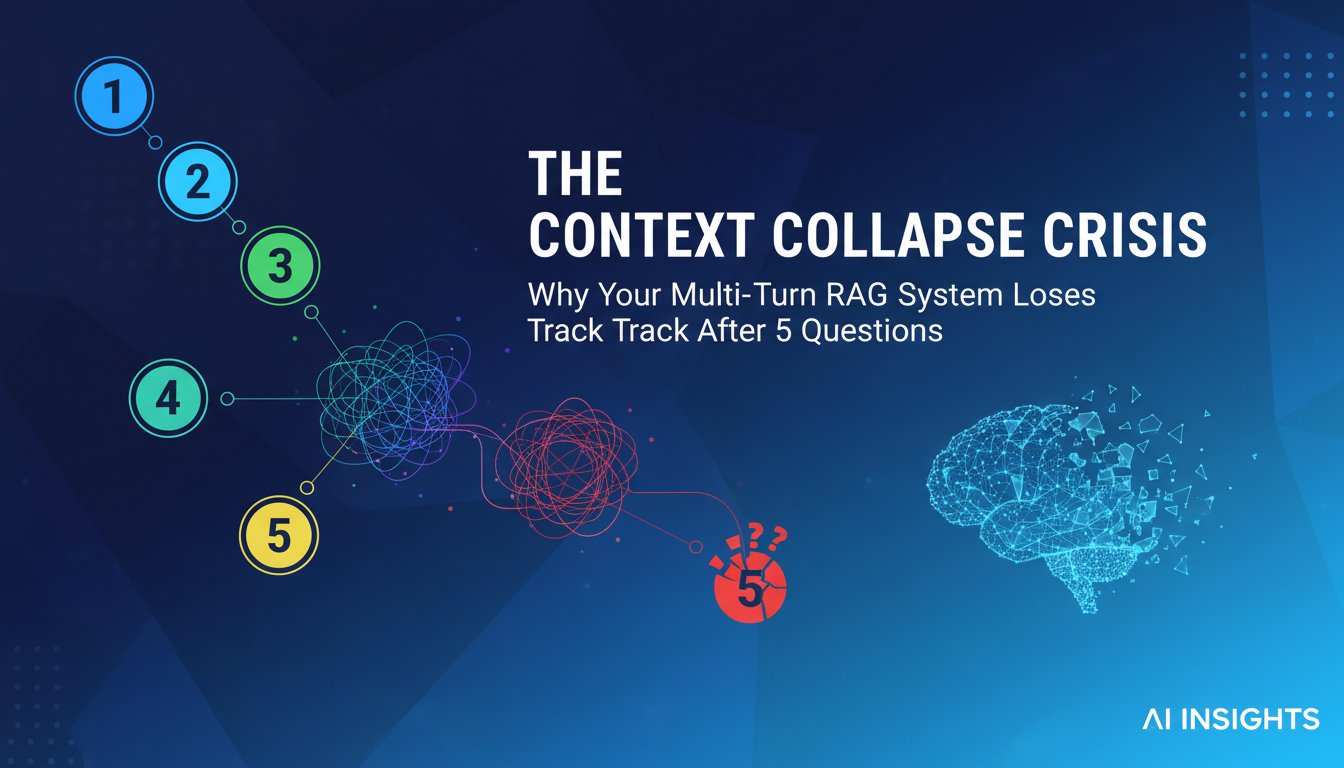Picture this: You’re a senior AI engineer at a Fortune 500 company, and your CEO just walked into your office asking why your RAG system can’t answer simple questions about last quarter’s financial reports. The system that took your team six months to build is giving users generic responses that could have come from a basic Google search. Sound familiar?
This scenario plays out in boardrooms across the globe every day. Companies invest millions in RAG implementations, only to discover their systems lack the contextual intelligence needed for real business impact. The problem isn’t just retrieval—it’s the gap between finding relevant information and generating truly useful responses.
Enter Weaviate’s revolutionary Generative Search capability, a game-changing approach that bridges this gap by combining vector search with intelligent content generation. Unlike traditional RAG systems that simply concatenate retrieved documents, Weaviate’s Generative Search synthesizes information at query time, creating responses that are both contextually relevant and actionable.
In this comprehensive guide, you’ll learn how to build a production-ready RAG system using Weaviate’s latest features, complete with real-world implementation patterns, performance optimization strategies, and enterprise-grade security considerations. We’ll move beyond basic tutorials to tackle the complex challenges that separate proof-of-concepts from production systems.
Understanding Weaviate’s Generative Search Architecture
Weaviate’s Generative Search represents a fundamental shift in how we approach information retrieval and synthesis. Traditional RAG systems follow a simple pattern: retrieve documents, stuff them into a prompt, and hope the language model can make sense of it all. This approach often results in verbose, unfocused responses that fail to address the user’s specific intent.
Generative Search flips this model by treating the generation step as an integral part of the search process. When you query a Weaviate instance with Generative Search enabled, the system doesn’t just return raw documents. Instead, it uses the retrieved context to generate responses that are specifically tailored to your query, maintaining factual accuracy while improving readability and relevance.
The architecture consists of three key components working in harmony. First, the vector search engine identifies semantically relevant content using state-of-the-art embedding models. Second, the hybrid search capability combines vector similarity with traditional keyword matching, ensuring both semantic and lexical relevance. Finally, the generative layer synthesizes this information using large language models, creating responses that feel natural and purposeful.
What sets Weaviate apart is its native integration of these components. Unlike cobbled-together solutions that pipe data between different services, Weaviate’s unified architecture minimizes latency while maximizing consistency. This integration becomes crucial when building systems that need to handle thousands of concurrent queries while maintaining sub-second response times.
Setting Up Your Weaviate Generative Search Environment
Building a production-ready system starts with proper infrastructure planning. Weaviate Cloud Services offers the most straightforward deployment path, but understanding the underlying requirements helps you make informed decisions about scaling and customization.
Begin by provisioning a Weaviate cluster with sufficient resources for your expected workload. A typical enterprise deployment requires at least 16GB of RAM and 4 CPU cores, with additional memory scaling based on your data volume. Vector operations are memory-intensive, so err on the side of over-provisioning initially.
Configuration of the generative modules requires careful consideration of your use case requirements. Weaviate supports multiple generative backends, including OpenAI’s GPT models, Anthropic’s Claude, and open-source alternatives like Llama 2. Each option presents different tradeoffs in terms of cost, latency, and customization potential.
import weaviate
from weaviate.auth import AuthApiKey
# Initialize client with authentication
client = weaviate.Client(
url="https://your-cluster.weaviate.network",
auth_client_secret=AuthApiKey(api_key="your-api-key"),
additional_headers={
"X-OpenAI-Api-Key": "your-openai-key"
}
)
# Define schema with generative search capabilities
schema = {
"class": "EnterpriseDocument",
"description": "Enterprise documents with generative search",
"vectorizer": "text2vec-openai",
"moduleConfig": {
"text2vec-openai": {
"model": "ada-002",
"modelVersion": "002",
"type": "text"
},
"generative-openai": {
"model": "gpt-3.5-turbo"
}
},
"properties": [
{
"name": "content",
"dataType": ["text"],
"description": "Document content"
},
{
"name": "title",
"dataType": ["string"],
"description": "Document title"
},
{
"name": "category",
"dataType": ["string"],
"description": "Document category"
},
{
"name": "timestamp",
"dataType": ["date"],
"description": "Creation timestamp"
}
]
}
client.schema.create_class(schema)
The schema definition above incorporates both vectorization and generative capabilities at the class level. This configuration ensures that every document ingested into this class can participate in both vector search and generative operations without additional setup.
Implementing Advanced Data Ingestion Patterns
Production RAG systems require sophisticated data ingestion pipelines that can handle diverse document types, maintain data freshness, and ensure quality control. Weaviate’s batch import capabilities provide the foundation, but enterprise deployments need additional layers of processing and validation.
Document preprocessing plays a critical role in system performance. Raw documents often contain formatting artifacts, redundant information, and structural inconsistencies that can degrade search quality. Implement a preprocessing pipeline that normalizes text formatting, extracts metadata, and chunks content appropriately for your embedding model’s context window.
import asyncio
from typing import List, Dict
import tiktoken
class DocumentProcessor:
def __init__(self, max_chunk_size: int = 1000):
self.max_chunk_size = max_chunk_size
self.encoding = tiktoken.get_encoding("cl100k_base")
def chunk_document(self, content: str, title: str) -> List[Dict]:
"""Intelligently chunk documents while preserving context"""
tokens = self.encoding.encode(content)
chunks = []
for i in range(0, len(tokens), self.max_chunk_size):
chunk_tokens = tokens[i:i + self.max_chunk_size]
chunk_text = self.encoding.decode(chunk_tokens)
chunks.append({
"content": chunk_text,
"title": title,
"chunk_index": len(chunks),
"total_chunks": -1 # Will be updated later
})
# Update total chunks for all chunks
for chunk in chunks:
chunk["total_chunks"] = len(chunks)
return chunks
async def batch_import_documents(client, documents: List[Dict]):
"""Efficiently import large document collections"""
processor = DocumentProcessor()
with client.batch(
batch_size=100,
dynamic=True,
timeout_retries=3,
callback=None
) as batch:
for doc in documents:
chunks = processor.chunk_document(doc["content"], doc["title"])
for chunk in chunks:
batch.add_data_object(
data_object={
"content": chunk["content"],
"title": chunk["title"],
"category": doc.get("category", "general"),
"timestamp": doc.get("timestamp")
},
class_name="EnterpriseDocument"
)
This implementation demonstrates intelligent chunking that preserves document context while respecting token limits. The batch import pattern ensures optimal throughput while providing error handling and retry logic essential for production deployments.
Optimizing Query Performance and Accuracy
The real test of any RAG system lies in its query performance under production loads. Weaviate’s Generative Search offers multiple optimization levers, but knowing when and how to use them makes the difference between a system that works in demos and one that thrives in production.
Hybrid search configurations require careful tuning based on your data characteristics and query patterns. Pure vector search excels at semantic similarity but can miss exact matches that users expect. Conversely, keyword search provides precision for specific terms but lacks the contextual understanding that makes RAG powerful.
def execute_optimized_generative_search(client, query: str, limit: int = 5):
"""Execute hybrid search with generative synthesis"""
response = (
client.query
.get("EnterpriseDocument", ["content", "title", "category"])
.with_hybrid(
query=query,
alpha=0.7, # Favor vector search (0.0 = keyword only, 1.0 = vector only)
vector=None # Let Weaviate handle vectorization
)
.with_generate(
single_prompt="""You are an expert analyst reviewing enterprise documents.
Based on the provided context, generate a comprehensive response to: {query}
Context: {content}
Requirements:
- Provide specific, actionable insights
- Reference relevant details from the source material
- Maintain professional tone
- If information is insufficient, clearly state limitations
Response:"""
)
.with_limit(limit)
.with_additional(["score", "explainScore"])
.do()
)
return response
# Advanced query with filters and ranking
def execute_filtered_generative_search(client, query: str, category: str = None, days_back: int = 30):
"""Execute generative search with temporal and categorical filters"""
where_filter = {
"operator": "And",
"operands": []
}
if category:
where_filter["operands"].append({
"path": ["category"],
"operator": "Equal",
"valueText": category
})
if days_back:
from datetime import datetime, timedelta
cutoff_date = (datetime.now() - timedelta(days=days_back)).isoformat()
where_filter["operands"].append({
"path": ["timestamp"],
"operator": "GreaterThan",
"valueDate": cutoff_date
})
response = (
client.query
.get("EnterpriseDocument", ["content", "title", "category", "timestamp"])
.with_hybrid(query=query, alpha=0.7)
.with_where(where_filter if where_filter["operands"] else None)
.with_generate(
single_prompt="""Analyze the following enterprise documents and provide insights for: {query}
Context: {content}
Document: {title}
Category: {category}
Date: {timestamp}
Provide a detailed analysis that considers temporal relevance and categorical context."""
)
.with_limit(10)
.do()
)
return response
These query patterns demonstrate how to balance search precision with generative quality. The alpha parameter in hybrid search allows fine-tuning the balance between semantic and lexical matching, while filters ensure results remain relevant to current business needs.
Production Deployment and Monitoring
Moving from development to production requires addressing scalability, reliability, and observability concerns that don’t surface during initial testing. Weaviate provides robust production capabilities, but implementing proper monitoring and alerting ensures system health visibility.
Implement comprehensive logging that captures both system metrics and business outcomes. Track query latency, error rates, and resource utilization alongside user satisfaction metrics and answer quality scores. This dual focus helps identify technical issues before they impact user experience.
import logging
import time
from typing import Optional
from dataclasses import dataclass
@dataclass
class QueryMetrics:
query: str
latency_ms: float
results_count: int
error: Optional[str] = None
user_feedback: Optional[int] = None # 1-5 rating
class ProductionRAGSystem:
def __init__(self, client, logger=None):
self.client = client
self.logger = logger or logging.getLogger(__name__)
def search_with_monitoring(self, query: str, **kwargs) -> Dict:
"""Execute search with comprehensive monitoring"""
start_time = time.time()
metrics = QueryMetrics(query=query, latency_ms=0, results_count=0)
try:
response = execute_optimized_generative_search(
self.client, query, **kwargs
)
metrics.latency_ms = (time.time() - start_time) * 1000
metrics.results_count = len(response["data"]["Get"]["EnterpriseDocument"])
self.logger.info(f"Query success: {metrics.__dict__}")
return {
"success": True,
"data": response,
"metrics": metrics
}
except Exception as e:
metrics.error = str(e)
metrics.latency_ms = (time.time() - start_time) * 1000
self.logger.error(f"Query failed: {metrics.__dict__}")
return {
"success": False,
"error": str(e),
"metrics": metrics
}
def health_check(self) -> Dict:
"""Comprehensive system health check"""
try:
# Test basic connectivity
start_time = time.time()
self.client.schema.get()
connectivity_latency = (time.time() - start_time) * 1000
# Test search functionality
start_time = time.time()
test_response = self.client.query.get("EnterpriseDocument").with_limit(1).do()
search_latency = (time.time() - start_time) * 1000
return {
"status": "healthy",
"connectivity_latency_ms": connectivity_latency,
"search_latency_ms": search_latency,
"document_count": len(test_response["data"]["Get"]["EnterpriseDocument"])
}
except Exception as e:
return {
"status": "unhealthy",
"error": str(e)
}
This monitoring framework provides the visibility needed to maintain system health in production. Regular health checks catch




